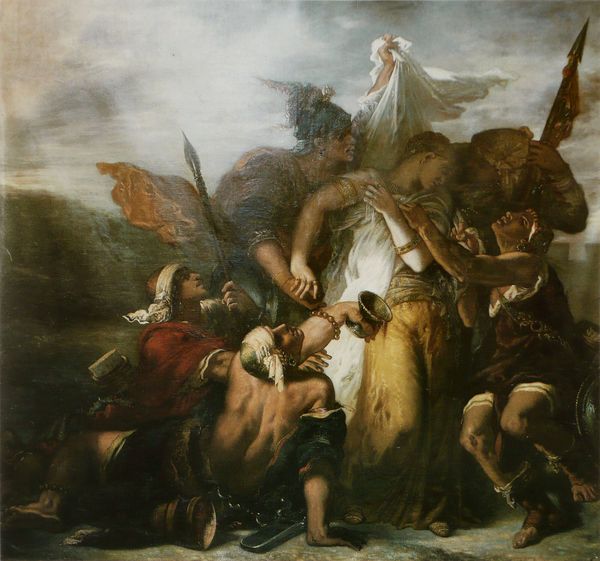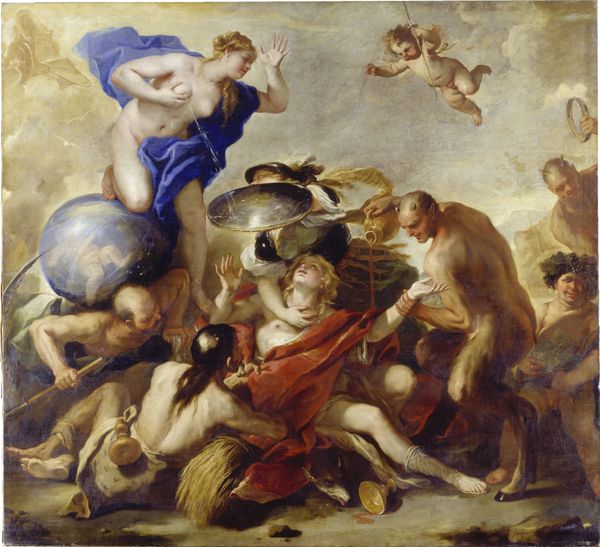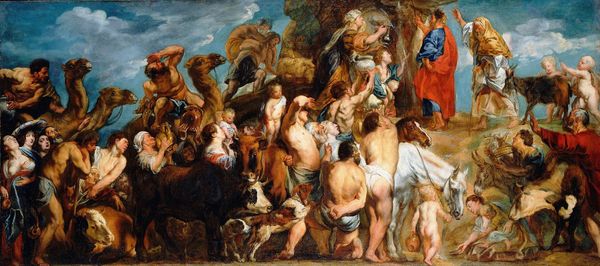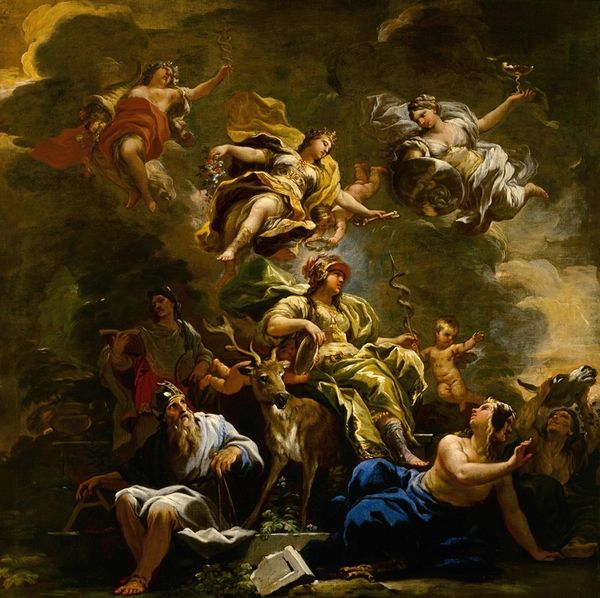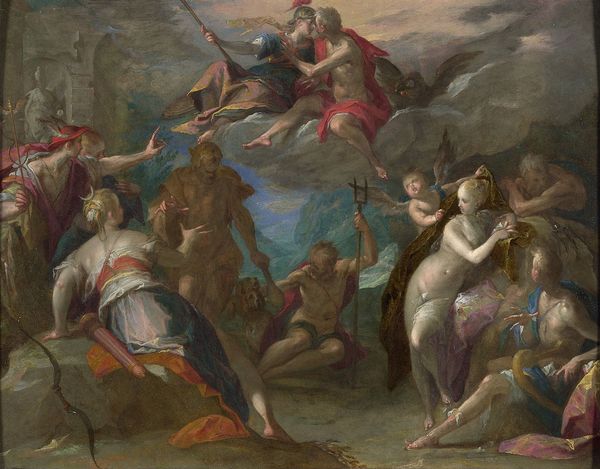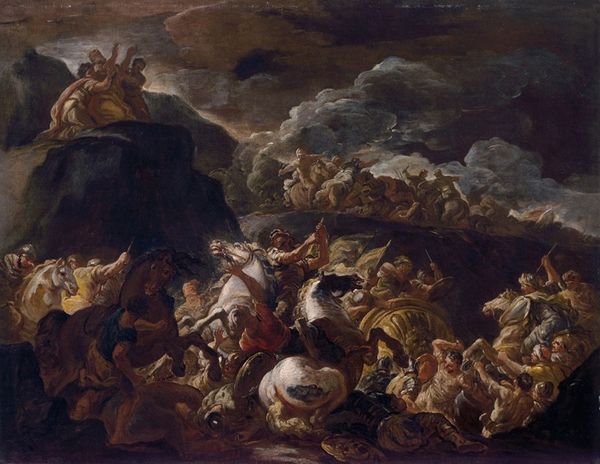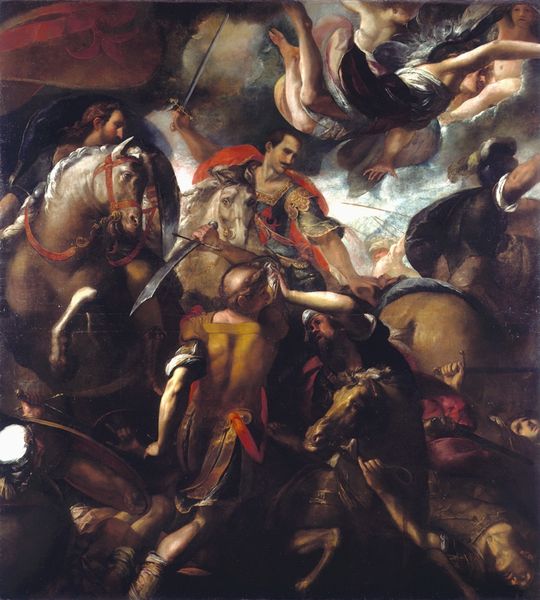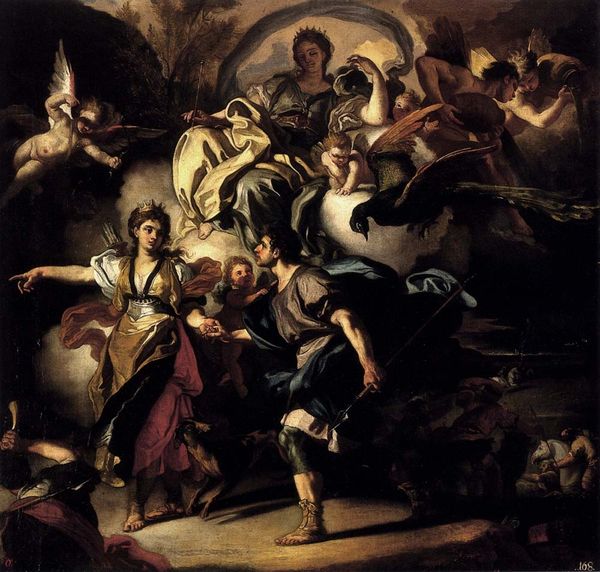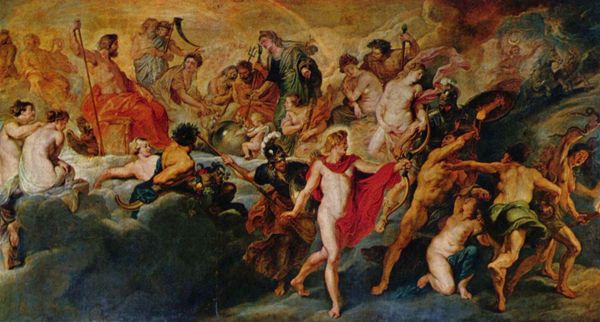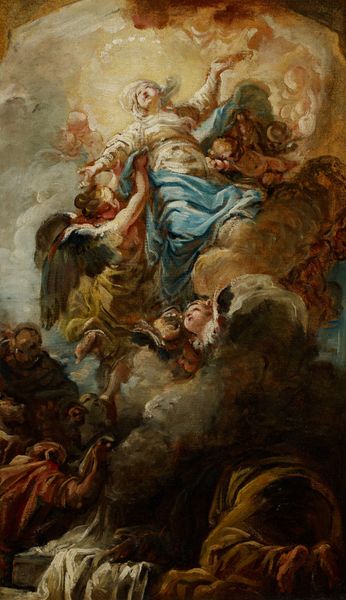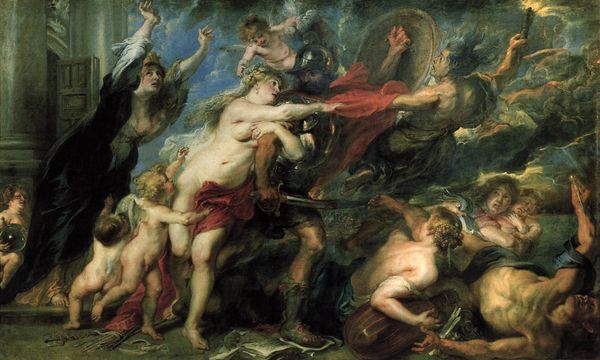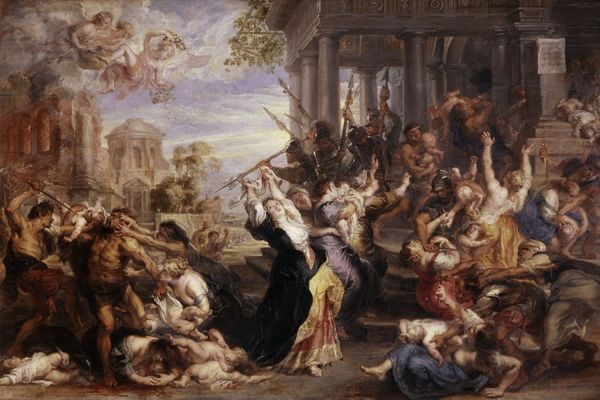
painting, oil-paint
#
narrative-art
#
baroque
#
painting
#
oil-paint
#
landscape
#
figuration
#
oil painting
#
underpainting
#
group-portraits
#
history-painting
Copyright: Public domain
Editor: So, we’re looking at "The Road to Calvary" by Peter Paul Rubens. It appears to be an oil painting. It’s… intensely dramatic. I’m immediately struck by the sheer density of figures, the horses, the soldiers...It feels overwhelming. What do you see in this piece? Curator: The turmoil, the feeling of being overwhelmed – I think that speaks volumes. Rubens paints here not just a religious scene, but a deeply political one. How are marginalized bodies policed? What does justice mean within an oppressive regime? Think about the gaze of the figures on horseback – symbols of power – and how they relate to those who are suffering and falling beneath them. Editor: You mean, the soldiers? They’re clearly in control of the situation. Curator: Exactly. But even beyond them, consider the way Rubens uses light and shadow. He illuminates certain figures, but others remain in darkness. Who is afforded visibility and who is cast into the shadows? What does this suggest about the societal structures at play, not just during Christ's time but in Rubens' own world? He painted this during the Counter-Reformation, so where did the religious narratives and socio-political dynamics converge? Editor: That's a good point. So the contrast between light and dark visually reinforces those who have power and those who don’t. It’s pretty striking, now that you mention it. Curator: And think about the performative nature of the scene. Is this about genuine piety, or public spectacle? The almost theatrical poses of some of the figures suggest a degree of constructedness – a performance of power. Editor: So it’s not just a depiction of a historical event, but also a commentary on power, visibility, and performance. I see that the way it reflects social dynamics transcends its subject. Thanks for this perspective! Curator: Absolutely. Considering art through these broader lenses opens it to much deeper dialogues about what these representations really mean.
Comments
No comments
Be the first to comment and join the conversation on the ultimate creative platform.
